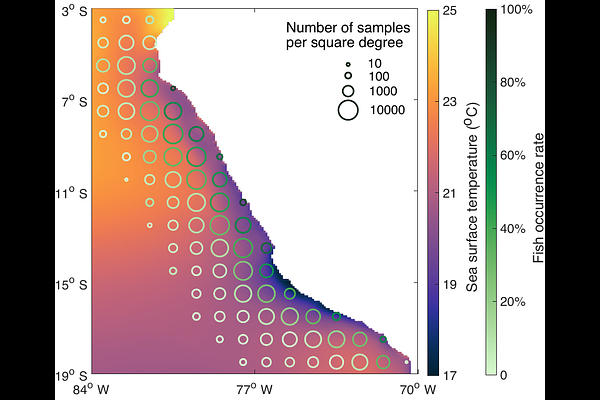Supervised and unsupervised machine learning methods for modelling current and future habitat of Peruvian anchovy

Supervised and unsupervised machine learning methods for modelling current and future habitat of Peruvian anchovy
Cruz, M. H.; Xue, T.; Hauschildt, J.; Gutierrez, M.; Kemena, T.
AbstractUnderstanding the drivers and potential impacts of environmental variability on the distribution of Peruvian anchovies, the largest single-species fishery on the planet, is essential for their proper management in a changing world. However, the intricate interactions of these organisms and environmental variability require the use of complex models such as machine learning methods. In this study, we compared three methods for producing habitat maps of anchovies: the traditional Generalised Additive Models, the XGBoost which is a form of supervised machine learning and a new method based on clustering water types as a form of unsupervised machine learning. We optimised the three methods with a parameter grid search algorithm and compared their capability to replicate the mean state of anchovies by comparing them with presence-absence observations along the Peruvian coastline between 1990 and 2010. We used the output of a physical-biogeochemical model as input for the habitat models to produce distribution maps of anchovy. All models successfully simulated the distribution of anchovies along the Peruvian coastline in normal years and a reduced area of distribution with most of the anchovies in the southern part of the domain during the canonical El Nino 97/98. We then applied the models to predict potential changes in the distribution of anchovies under projected temperature and wind conditions by the end of the century. We observed a reduction in the probability of anchovy occurrence under conditions of higher temperature and weaker winds. Two of the three habitat models predicted a severe maximum decline by 90% (GAM) and 75% (XGBoost) whereby the clustering model predicted a moderate maximum decline in anchovy occurrence by 20%.